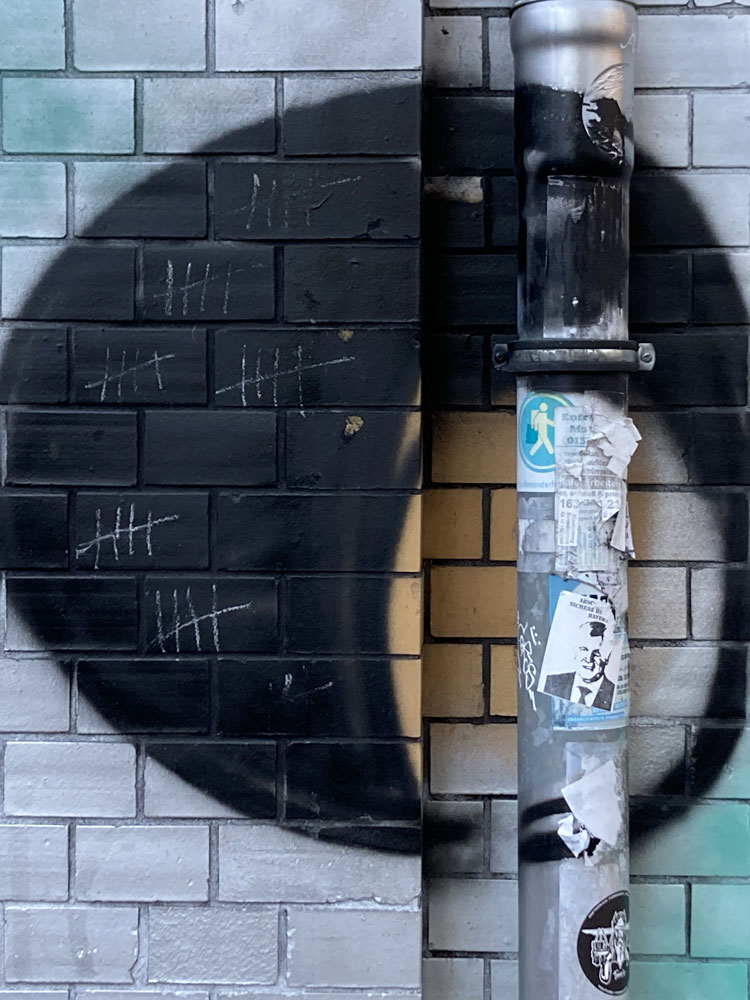November begins with leaves still in the trees, and many on the sidewalks skidding and making sound. By the end of November, the trees are skeletons, the leaves have become a heavy scent of wet earth, aiming already toward spring. This is the month I spent at Lichtenberg Studios in 2022, and a metaphor for how I spent the time. I’m a visual artist writing about graffiti I found in 2017, inside prison cells at Berlin-Hohenschönhausen, which is an hour from the studios by foot, in Lichtenberg.
This November I was walking along tree-shaded paths, ones possibly frequented by Stasi officials on their way to work, and riding the tram that might’ve been the daily commute of an interrogator. I was shadowing shadows, perhaps. On a Sunday walk by the river I came across memorials of citizens, political prisoners, from another prison: a site now surrounded by a nature preserve. The nearby zoo also has a lightly camouflaged past. Everywhere in plain sight in Lichtenberg, I found history complicated by memorials and by revision.
I’ve been thinking about what pasts are standing in front of us, and who sees them. What skeleton of history lasts; what has decayed, is transformed? What parts of experience harden into structures, embed themselves in architecture, and what details drop away? The little markings I work with in the prison graffiti seem like details — I’m not sure what they really signify — is it time? What about the graffiti that look the same, inside the prison and out in the fresh air: what kind of time is this?

